How home DNA kits are delivering shocking results
More than 27 million people have completed a home DNA test, and while for most it’s a fun exercise, for others it’s a genetic hand grenade.
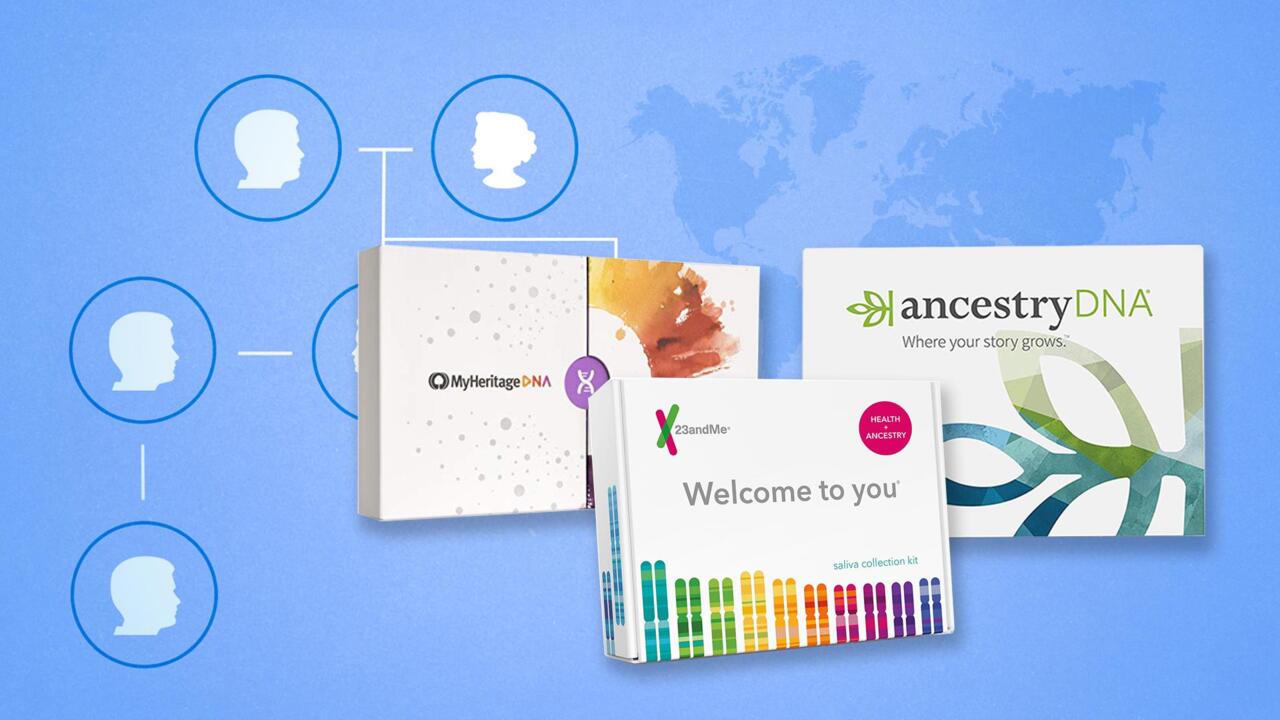
QWeekend
Don't miss out on the headlines from QWeekend. Followed categories will be added to My News.
Luke Zapart took a moment to brace himself. As his cursor hovered over the email link on screen, he realised he could be a click away from everything … or nothing.
Could a few cheek cells really unlock the identity of his birth parents?
At the age of 39, Luke had reached a dead end using official records to track them. On a whim, he decided to give ancestral DNA testing a punt.
He ordered a test kit online, poked a swab stick awkwardly around his mouth, then put it in a tube and posted it off to MyHeritage. A few weeks later his email pinged with a notification that his results were ready to view. Taking a deep breath, he clicked the link.
First to flash on screen was an ethnicity analysis, tracing his DNA to China and Scotland. It was no real surprise; a mirror could probably have told him as much, and his much-loved adoptive parents already had.
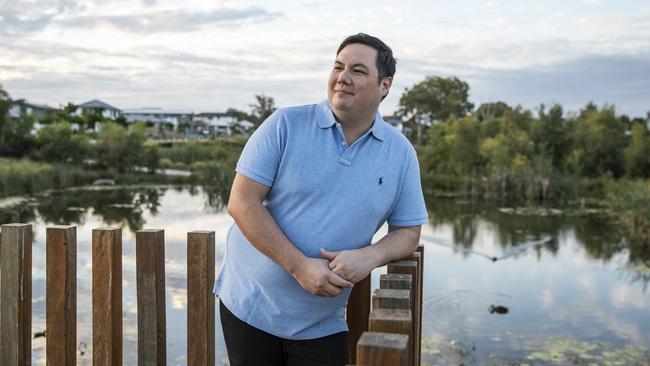
Luke knew his birth parents were a mixed-race couple; that they were only 17 and 18 when he was born. It wasn’t that they didn’t love him; they were just too young, his adoptive mum Sieglinde had always reassured him.
As he continued to scroll down, his chest tightened. The analysis had found a strong DNA link to another MyHeritage user. It was a female named Maria – possibly a cousin, the site predicted, but definitely a blood relative and that link would almost certainly lead him to his mother or father.
“It was a jolt,” Luke remembers. “I started to get excited because I thought OK, this is really something. But I messaged her through the site – and nothing.”
He sent another message. Still no response. It was hugely deflating. After years of wondering, he felt tantalisingly, frustratingly close.
So, he did what any one of us would do – hit Facebook.
“I felt really uncomfortable, but I did a bit of research and found her [Maria] on social media. It looked like she was still at high school and I thought uh-oh.”
He was acutely aware it wasn’t the best look. He was a 39-year-old married father of two from the Gold Coast. She was a Perth teenager. But he tried a final plea, sending an email with his phone number: I think I’m a relative of yours. Can you please ask your parents?
A few days later, on Anzac Day 2018, Luke was at South Bank with his young family when his phone buzzed with a text that would change his life: Please call me in regards to your email to Maria.
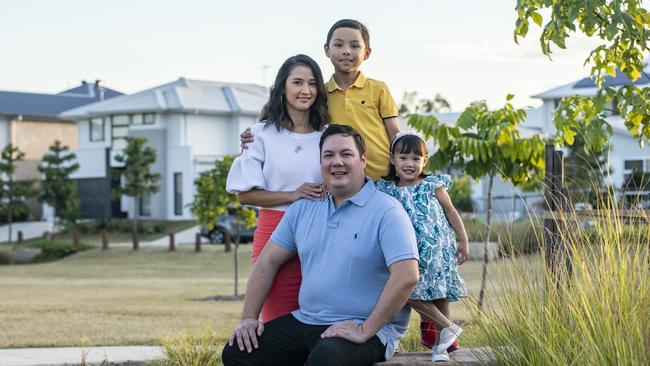
The confused schoolgirl had finally shown the strange messages to her mother, and she knew immediately what it meant – a family secret stretching back nearly four decades was a secret no more.
Maria’s mother was actually Luke’s aunty. It turned out only his mother and her two sisters ever knew of his birth. Together, they hid their secret and their sadness.
When he called, the tears flowed quickly.
“She said: ‘I’m your aunty, we’ve known about you all along. We’re so glad you’ve made contact. I’m going to talk to your mum, Alice, just to prepare her, and she’s going to call you’.”
It was a whirlwind. Within minutes his mother was on the phone from Darwin. She had thought about him every day and still had a photo of Luke, taken shortly after his birth – her only reminder of a lost son. Alice was already arranging to fly south to meet him.
“I remember that day exactly. I just sat down on a bench trying to process it all. There were lots of tears.”
Tears of happiness, but also of relief. Luke’s adoptive parents always encouraged him to search for his birth family, but he had resisted, telling himself he didn’t need to know; he already had a great family. But finding his biological mum, and being welcomed with open arms, lifted a weight he never realised he carried until it was gone.
“She said she had always been thinking of me and hoping this day would come,” he says.
Two weeks later Alice flew to the Gold Coast and within months he had visited his huge extended family in Darwin.
The story of how his cousin Maria came to be on the MyHeritage database in the first place is now family folklore. She secretly sent her DNA for testing in a fit of pique, hoping – as many teenagers do – it would prove she was actually someone else’s child. No such luck. Instead, she helped reunite a son with his mother.
But what of Luke’s father? On the adoption paperwork he was identified only as “Craig”, with a description from Alice that read: “Good-looking, quiet, lazy.” He was also about to be very surprised.
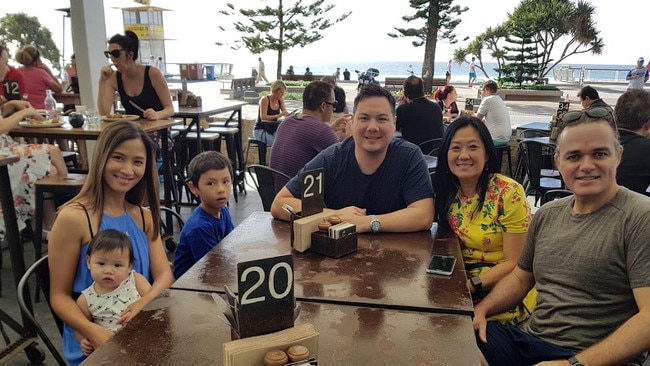
It was Craig Caldwell’s 57th birthday and in among the Facebook well-wishes was a startling greeting from an old flame: How are you? By the way, you have a 39-year-old son and two grandchildren.
Perhaps not those exact words, but near enough.
“My jaw was on the floor,” he remembers of the moment he found out Luke was his son. “Gobsmacked would be the word, but in a good way.”
His partner’s reaction was somewhat different. “She just couldn’t stop laughing,” he says.
Craig, obviously, is a pretty easygoing bloke. A trait – among many – he shares with his firstborn.
“We’re very, very, very similar,” he says, marvelling at the role of genetics in personality.
Craig never had an inkling of Luke’s birth. His teenage girlfriend Alice just seemed to vanish back in 1978. He was told she left Sydney to return to family in Darwin. She did, but not until after the birth of their child.
Although Craig went on to have three more sons in a later relationship (as did Alice), Luke’s two children are his first grandchildren.
“The funny thing was, it was almost a bigger thing when it dawned on me that, ‘Oh my God! I’m a grandfather’. What a bonus. That almost hit me harder than finding out I was a father.”
Today, the reunited father and son are incredibly close. “I chat to him two or three times a week and we’re always gasbagging for an hour or two,” Craig says.
Extended family members have embraced him too, welcoming relationships that, although unexpected, have enriched the family tree. On Luke’s 40th birthday last year, the entire clan – including four parents and seven siblings – celebrated together.
“I think it’s really worked out well for everyone,” Craig says, acknowledging his son’s adoptive parents did a far better job that he could have hoped to do as a 18 year old.
“To be honest with you, the way I was in my youth, there might be one or two more lurking in the closet somewhere,” he jokes.
And he isn’t Robinson Crusoe on that count, with a boom in genetic genealogy shaking up family trees around the world.
The market for at-home DNA testing has exploded in recent years. In 2017, about 5 million people worldwide submitted samples for analysis with the major online genealogy companies. By early last year that figure had multiplied to more than 27 million. One of the major drivers has been the rapid fall in price from $1000 a decade ago, to under $100 today.
Many are now familiar with the drill: Order a test kit, spit in a tube (or swab your cheek), pop it in the post and Bob’s your uncle – except maybe he isn’t.
The new frontier of genetic genealogy is laying bare the truth of our heritage, from ethnicity to parentage. Long-forgotten skeletons are tumbling out of closets at a rate never seen before.
While the technology has been transformative in delivering answers to adoptees and donor-conceived people, it is also delivering a few rude shocks to those unaware that their history doesn’t match their biology.
Virtually all are triggered by an optional feature on ancestry sites that notifies users when they share DNA with others on the company database. It reveals how strong the link is and often includes a predicted relationship, such as first cousin, sibling or parent. For most, it’s a simple way to build family trees, for others it lobs a genetic hand grenade.
The situation has become so prevalent it has its own acronym: a DNA NPE (Not Parent Expected). Or, in less polite circles: a DNA WTF.
It’s confronting, emotional and often just plain confusing for people who don’t know a centimorgan from a second cousin. The first port of call is often customer service at the ancestry companies, where staff never know whether they will be dealing with a password reset or an identity crisis.
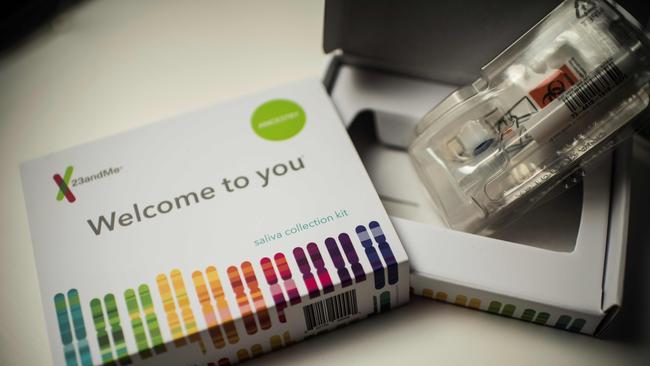
Amanda Altman had only been working the phones at the support hub of 23andMe, the first company to offer at-home DNA analysis, in San Francisco for a few days when she got her first “not parent expected” call in 2016. As Altman listened, the confused customer explained her family had all submitted samples, selecting the option that links users with shared DNA. But there was a problem.
“She was expecting to see her father in there and he wasn’t showing up,” Altman remembers. “Typically the first kind of response we get is people really want to make sure this isn’t a mistake.”
The first step is walking customers through the science; matching accuracy for close relationships is almost 100 per cent. As Altman spoke, the woman slowly processed what it meant – the man she had called “Dad” all her life was not her biological father.
“From there it’s just being a sounding board for the customers. Their brain just has so much going on. I’ve definitely had individuals call that have been in a state of panic.”
On the flip side are customers who have digested shock results and found a silver lining:
How I became the first person to run a multistage, 250km ultramarathon on all seven continents
Half-sisters who have become best friends; a man who thought he’d die childless discovering a daughter and grandchildren.
“It might not be what they’ve known their whole life, but it’s kind of great for them to look at how they can expand their family and make the most of it.”
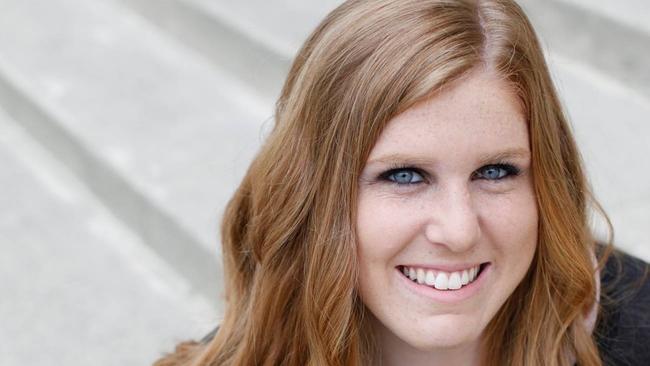
Altman estimates her team handles about 20 “unexpected relative” calls each week, with the company recently launching a dedicated information page for the increasing number of customers in this situation.
While these cases are definitely outliers, Ancestry’s Sydney-based family history specialist Brad Argent says the industry has reached a tipping point. Databases are so large, and growing almost exponentially, that any family with long-buried secrets will likely find them unearthed via a DNA test.
“I became a mum of two overnight when I was 23”
“Whenever I’m working on a project with someone I say, ‘Look, talk to your parents, find out if there’s anything we need to know about because if you take this test, there’s a good chance we will find that biological connection’.”
Argent, who has supervised Ancestry’s rollout of test kits across 35 countries in the past 13 years, says genetic analysis has turbocharged family history. “We have kind of reached that stage now where everybody will learn something new about their family. For the vast bulk of people, it’s a wonderful tool to help them understand themselves a little better and to reconnect families.”
For others, it may be more surprising. Argent’s advice to those about to begin an ancestral search is to be certain what you’re agreeing to. You may choose to match your DNA with others, or not. “But you need to know you have that option, because once you’ve gone down this path – particularly if you make a match – you can’t take it back,” he warns.
While some adoptees go looking for answers, others have answers thrust upon them.
Michael Johnston found himself in the latter category when he received an answer to a question he didn’t even ask – who was his biological father?
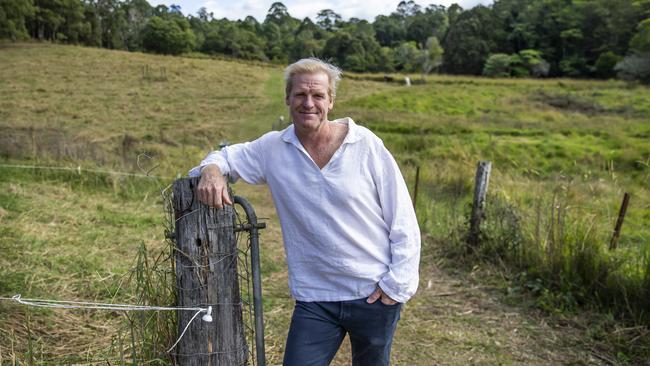
It dropped into his email inbox in the early hours of the morning about two years ago. He was a little bleary-eyed when he scanned the message, and opened the photo attachment. Squinting at the image, he couldn’t quite figure out where he’d taken the silly selfie. It took a while to dawn on him – it wasn’t a selfie, it was a photo of his birth father, a man he had never met, yet who looked startlingly like himself.
His mind was racing as he read the email. In the space of a few sentences he realised he had both found and lost his father. The man in the photo had died a decade earlier. It was a wrenching moment. He’d come so close, almost by accident.
Michael, who lives in Maleny, in the Sunshine Coast hinterland, always knew he was adopted, but had never felt the slightest desire to find his birth parents.
“I really hit the jackpot with my adoptive parents,” he says. “I grew up in a beachfront home in Maroubra. We had a caravan on the Hawkesbury River. I’ve had an unreal life.”
Then one day, in his mid-40s, a puzzle piece from his biological past landed at his feet and, well, he never could resist a puzzle.
The story goes back to 2014, when Michael’s son Nicholas started work at a biotech firm and got his hands on a free 23andMe DNA test kit. Aware his father was adopted, he thought it could be prudent, and interesting, to have his genome analysed for disease markers.
“It was all very unremarkable,” Michael says of the genetic health results.
The family promptly forgot about it … until three years later when Nicholas received an email saying his DNA had been matched to a new user in Sweden, of all places. They shared so much DNA the company predicted the two may be cousins.
It was intriguing on many levels.
“I didn’t even realise there was a component that matched you up to other people around the world,” Michael says. “I thought it just looked at the medical side.”
Added to that, he didn’t have any relatives in Sweden. Not that he knew of, anyway. “That’s when we realised, this must be from my birth parents’ side of things.”
After a crash course in genetics and genealogy, Michael deposited some saliva in a tube and submitted his own DNA to the company to confirm what he suspected – the Swedish mystery man was actually his half-brother.
Keeping his cards close to his chest, he messaged the man to say he believed they were related, attaching a photo of himself.
“He didn’t realise the match was so close,” Michael says. “He sent a photo back and said, ‘I can’t believe how much you look like my father’.”
This was the photo Michael mistook for a picture of himself.
“I said, ‘Well, yeah, there’s a reason for that. That’s because I’m pretty sure he is my father too.’ After that, he stopped communicating and we’ve never spoken again.”
Michael would learn later his half-brother had no idea he’d selected an option to match his DNA with other users; he’d submitted a sample hoping to discover some exotic ethnicity in his genes – perhaps Romani or sub-Saharan African. He’d dug up far more than he bargained for.
2020 Queensland Greats list celebrates our local heroes
Before he broke contact, Michael’s half-brother had mentioned a sister. Armed with this information Michael followed a trail of Facebook breadcrumbs to find his half-sister, Camilla, in Italy.
She welcomed him with open arms and helped fill in some blanks – like what on earth was the connection to Sweden? It turned out their father Gerard was a Queensland boy who married a Swedish woman he met backpacking. The couple had two children and settled in Sweden, where Gerard died in his 50s. He had never known he fathered Michael – the result of a teenage tryst, long before he met his wife.
Camilla introduced Michael to his father’s Queensland relatives and within weeks he was the guest of honour at a huge family reunion in Brisbane. It was pretty overwhelming for a boy raised without any extended family. “It was like half of western Queensland had rocked up. But they were great – an unbelievable bunch of people.”
They, in turn, were blown away by his resemblance to his father in looks and manner.
“My aunt was very close to my father and she said she feels like she’s got her brother back. She has even accidentally called me Gerard.”
Over the past few years, Michael has completed his own personal biological puzzle.
“Every month or so I put together more and more pieces.”
He now knows where he gets both his passion for music and terrible singing voice. He’s flown to Italy twice to meet his half-sister Camilla and even tracked down his mother. That phone call didn’t go so well.
“She said, ‘Oh well, it was a very long time ago. I don’t want anything to do with this – goodbye’.”
Thinking he had unfairly put her on the spot, Michael sent a letter filled with childhood photos. He let her know he didn’t want anything from her other than to let her know he had led a fortunate life; that he hoped she was at peace. He set up an email account for her to contact him, but the inbox remained empty.
“I feel for her, she’s obviously had to make tough choices in life and I respect her decisions even though I would like answers,” Michael says.
He has no regrets, though. He’s discovered more joy than pain and thoroughly enjoyed the process of assembling the jigsaw of his life.
Ancestry genealogist Brad Argent hears that sentiment time and again.
“Even the stuff that’s really challenging, at the end of the journey, the vast bulk of people feel better for having gone on it,” he says.
“Within us we’ve got this innate sense of wanting to understand where we’ve come from in the world.”
The insight unlocked by genetic genealogy is changing lives every day.
“It’s incredible the transformation that’s possible from just spitting in a tube – what a world we live in.” ■
This article is supported by the Judith Neilson Institute for Journalism and Ideas
